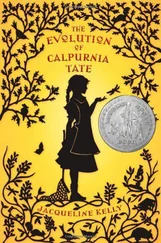On the other hand, the argument that a social group is only a collection and thus simply an aggregate of individuals with no established patterns of relationships and with no aims or purposes beyond those of the individuals who make it up is equally pernicious of human values. For a collection can have no established traditions or any purposes of its own and can expect no spirit of sacrifice or of public service from its members; instead, it must expect its members to be as competitive in their relations with one another as they would be toward any member of an outside group.
The middle ground that regards a social group as an aggregate of its own distinctive type avoids the difficulties both of totalitarian organicism and of the rampant individualism of the collectionists. Because of their belief that the whole has pattern, and thus is more than a mere aggregation of individuals, holders of the middle ground are able to preserve social tradition and to encourage devotion to the whole as an entity with its own distinctive values; but by their insistence that individuals are interchangeable within the whole they are able to protect the ultimate value of the individual and to infer that the whole exists for the sake of the individual, and not the opposite, providing him with opportunities to develop his higher potentialities through social cooperation in a way that would not be possible in a mere collection of individuals.
From centuries of argument on these matters there has begun to emerge a sufficient consensus for us to say that students of the social sciences today tend to avoid either of the extreme positions of organicism or individualism and tend to agree that social groups are aggregates of a special kind subject to their own rules and characteristics. Accordingly, we must seek to define a social group and to show the various types of these that can exist. There are three basic types of such social aggregates: (1) social groups, (2) societies, and (3) civilizations.
A social group is an aggregate of persons who have had relationships with one another long enough for these to have become customary, and for them to come to regard themselves as a unit with well-defined limits. The essential thing about a group is that its members can say who is in it and who is not. The term covers such aggregates as a class in history, a football team, a fraternity, a university, a business concern, a parish or church, a political party or a state. All these groups come into existence gradually as relationships are established and mutual recognition grows. When a class in history or a football squad assembles for the first time, it is not a group, but simply an aggregate of persons, and the group comes into existence only gradually. In fact, it continues to develop as long as it is of any social significance.
A society is a group whose members have more relationships with one another than they do with outsiders. As a result, a society forms an integrative unity and is comprehensible. It is the vehicle of the culture we were talking about before. A society has a culture because it is a unity, and it is a unity because its members have more relationships with one another than with outsiders. A group does not have any culture of its own; the culture of a group is the culture of the society in which the group is. By some stretching of the use of words, the personalities of the members of a group might be regarded as the culture of the group; but culture consists of more than personalities (since it also includes external culture), and the personalities of any group have more relationships with people who are outside the group than with people inside the group, if for no other reason than the fact that these personalities developed by means of relationships with outsiders long before these personalities joined the group. If this were not true, and the personalities of the members of the group had been developed by means of relationships within the group, then this aggregate of which we are speaking is a society and not a group.
It is sometimes difficult for some people to distinguish between a group and a society because they fail to see the most fundamental relationships among people. It is frequently helpful to think of some of the varied relationships that can exist among people. If this is done, it becomes clear that the Zuni Indians or the Japanese about 1850 were societies, but that a history class, a football team, or a corporation is a group. The Zuni or the Japanese were societies because they had their religious, intellectual, social, economic, and political relations with other members of the same group. The members of a class, of a football team, or of a corporation have most of these relationships with outsiders. Members of such a group have their religious relationships with the whole Christian tradition, while their intellectual relationships are with the whole tradition of Western culture; their social relationships are with outsiders to the group, such as parents, sweethearts, or friends; their economic relationships are with the whole capitalist economic world and beyond (for example, they drink coffee for breakfast); and their political relationships are with all their fellow citizens and even outside that. In such a wide-flung nexus of relationships, the relatively narrow range of mutual relationships possessed by members of the same class, the same team, or the same corporation shows clearly that these latter are groups and not societies.
The real problem in distinguishing between groups and societies arises when we look at modern political units like the state or nation. Most states, such as Canada, France, Italy, Cuba, or the United States, are not societies but groups because their members' relationships with one another are only political and social, while their religious, intellectual, and economic relationships are in a much wider context. The religious ideas of people in the countries mentioned are expressed in terms of monotheism, the Christian ethical and doctrinal systems, the deity as a masculine being located in the sky, and so forth. There is nothing specifically Canadian, French, or American in these ideas. On the other hand, they are quite different from the religious ideas of peoples in a different society. These latter might be expressed in terms of a female deity residing within the earth, or of nonhuman shape, or demanding human sacrifice, and so on. Similarly, the eating patterns of peoples in all the countries mentioned are very similar: they cook their food, eat bread made from wheat, drink coffee, prefer steaks, and are rather unlikely to be found eating raw blubber or fried locusts. Similarly, they all trace family descent through the father, practice monogamy, have private property, seek profits, accept the scientific tradition, use explosives as weapons, and so on. These similarities are so much more numerous and so much more important than the dissimilarities between these countries that the personality patterns and the general outlook on the universe that bind these people together into a single system of relationships make them have more relationships with one another across political frontiers than they do with members of any single group within such frontiers. The fact that Canadians have more relationships outside Canada than inside it means that Canada could not be understood or even described without using terms like Christian, scientific, industrial, monogamous, nationalism, Protestant, capitalism, parliament, democracy, railroads, rifles, ballots, radioactivity, and such. None of these terms, nor the things which they represent, is of Canadian origin nor can they be understood in purely Canadian terms. The need to use them in describing Canada means that Canada can be understood only as part of the larger system from which these words (and the objects they represent) arise. This large system is, as we shall see, Western civilization; Canada can only be understood as a political group within Western culture.
Читать дальше










